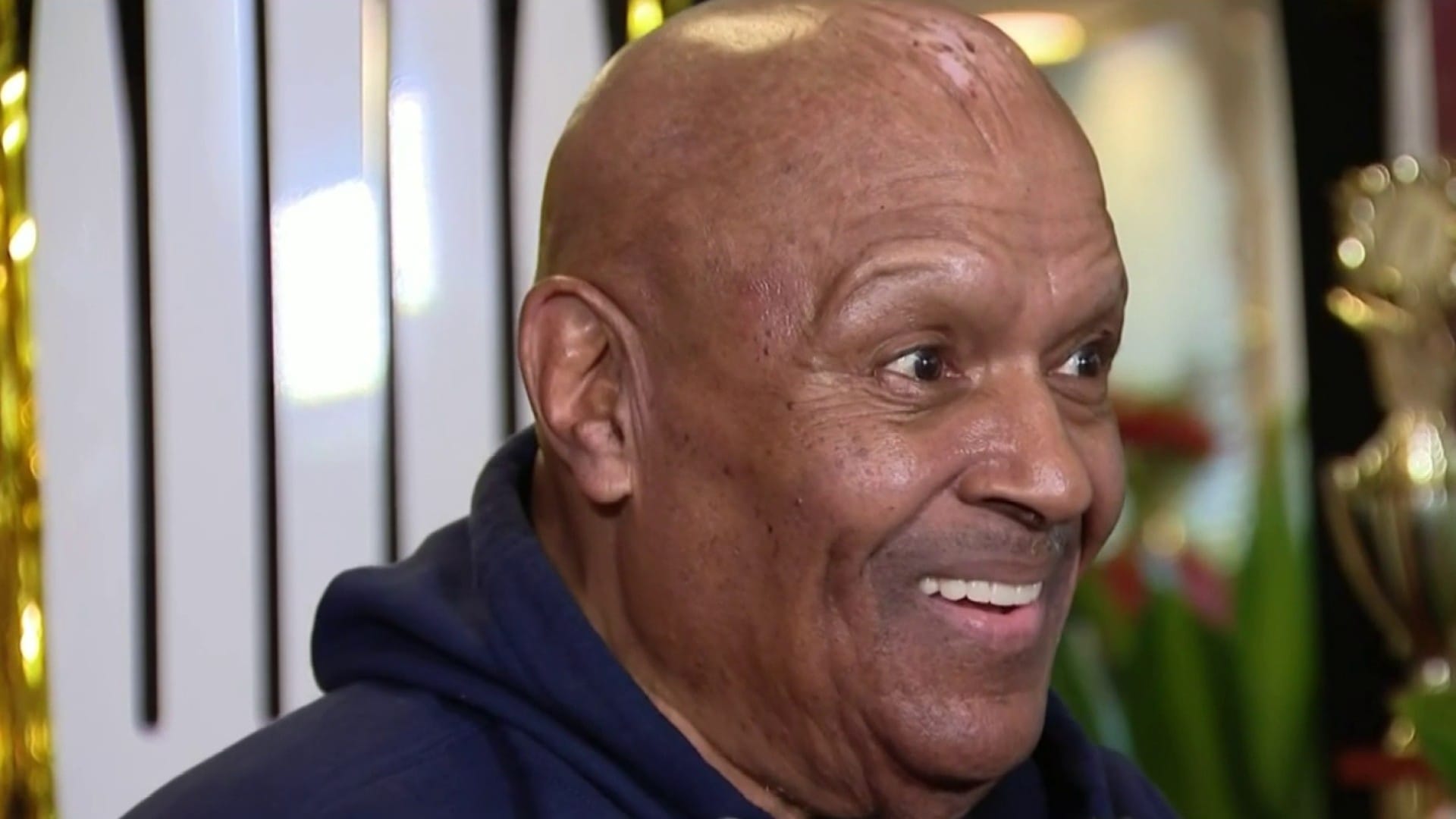Prepare yourself for the chilling tale of Abdullah the Butcher, a wrestler known for his gruesome matches and the sinister fork he wielded. Get ready to uncover the real-life story behind the “Madman,” Lawrence Robert Shreve, as we delve into the gritty details and controversies that marked his infamous career. From his modest beginnings to his reign as the undisputed champion of hardcore wrestling, we’ll shed light on the psychological and cultural forces that fueled Abdullah’s rise to infamy. Brace yourself as we reveal the blood, barbed wire, and enduring legacy of the legendary wrestler, Abdullah the Butcher.
Facts About Abdullah the Butcher: The Madman and His Legacy
Ever heard of a wrestler who used a fork as a weapon? That’s Abdullah the Butcher for you! Born Lawrence Robert Shreve, this Canadian wrestler wasn’t your average grappler. He was a showman, a rule-breaker, and a legend who left a trail of blood and awe in the ring.
He started as “Zebra Kid,” but that name didn’t exactly strike fear into the hearts of opponents. The persona of “Abdullah the Butcher” was a much better fit for his wild, unpredictable style. Think of the most hardcore wrestling you’ve ever seen – Abdullah the Butcher likely helped invent it. He wasn’t afraid to get bloody, and fans ate it up, earning him the nickname “Madman from Sudan” (though he’s actually Canadian).
But Abdullah wasn’t just swinging wildly. He was a master storyteller in the ring. Some of wrestling’s most legendary feuds involved him going head-to-head with guys like Terry Funk, Bruiser Brody, and Dusty Rhodes. You never knew what he’d do next, and that kept the crowds on the edge of their seats.
Those crazy matches earned him championship belts from all over, including the NWA Canadian Heavyweight title and the Stampede North American Heavyweight title. But Abdullah the Butcher’s impact goes way beyond titles. He inspired a whole new generation of wrestlers who weren’t afraid to push boundaries, guys like Mick Foley and The Dudley Boyz. He showed everyone that hardcore wrestling could be a brutal, bloody art form.
Of course, the safety of those extreme matches has always been debated. Some folks sued Abdullah the Butcher over injuries, raising tough questions about the risks involved. But controversy aside, there’s no denying the mark he left on the world of wrestling. Abdullah the Butcher remains a true icon.
Who is Abdullah the Butcher: Unveiling the Man Behind the “Madman”
Abdullah the Butcher! Just the name sends shivers down your spine, doesn’t it? We’re talking about a guy who made a career out of being one of the most hardcore, brutal, and downright scary wrestlers to ever step foot in the ring. This dude was the stuff of nightmares, known for his wild-eyed stare, unpredictable moves, and of course, that trusty fork he always seemed to have nearby.
But Abdullah the Butcher wasn’t always carving his way through opponents. The man behind the mask, so to speak, was born Lawrence Robert Shreve back in 1941 in Windsor, Ontario. And get this, before he was a wrestling legend, he was a pretty accomplished martial artist – a seventh-degree grandmaster in karate and judo!
It was in 1958 that Shreve decided to trade in his gi for wrestling trunks and adopt the unforgettable persona of “Abdullah the Butcher,” a ruthless sadist from Sudan (though some folks argue about his origins).
His matches weren’t for the faint of heart. We’re talking hardcore brawls with blood, sweat, and probably a few tears (mostly from his opponents, let’s be honest). He was infamous for his use of blading – a technique where wrestlers intentionally cut themselves to enhance the drama and violence of the match. And let me tell you, those scars on Abdullah’s head? They weren’t just for show; they were badges of honor earned in countless brutal battles.
Despite his terrifying in-ring persona, Shreve was actually known to be quite intelligent and even funny outside of the squared circle. He could switch from growling threats in character to speaking fluent English in interviews like it was nothing! This unexpected contrast only added to his mystique.
Over the years, Abdullah the Butcher racked up championships like they were going out of style, including the NWF Heavyweight Championship and the IWA International Heavyweight Championship. But more importantly, he earned something even bigger: the respect and admiration of wrestling fans worldwide.
And think about it – how many wrestlers can say they influenced an entire generation of hardcore wrestlers? Abdullah’s impact on wrestling, particularly the hardcore style, is undeniable. He paved the way for guys like Mick Foley, Terry Funk, and countless others who embraced a more extreme style of wrestling.
Even though he’s retired from active wrestling, Abdullah the Butcher’s legacy lives on. He was inducted into the WWE Hall of Fame in 2011, cementing his place as a true icon of professional wrestling.
So, the next time you see a picture of Abdullah the Butcher, that wild-eyed, blood-splattered figure who struck fear into the hearts of his opponents, remember this: there’s a lot more to the man than meets the eye. He was a complex figure, a skilled athlete, and a true legend who helped shape the landscape of professional wrestling as we know it.
Abdullah the Butcher’s Most Brutal Matches: A Legacy of Blood and Barbed Wire
Abdullah the Butcher wasn’t just a wrestler; he was a force of nature. We’ve talked about his style, but let’s dive into some of the matches that made fans gasp and cover their eyes – the ones that earned him the title of wrestling’s “Madman.”
Those Scars Tell a Story (and Probably Involve a Lot of Stitches)
You couldn’t look at Abdullah the Butcher without seeing those scars. I mean, they were everywhere. Some folks might think they were just for show, but they were a brutal reminder of how far this guy was willing to go in the ring. He used blades, and lots of them, to bring a level of realism to his matches that made you question if you could keep watching.
He wasn’t Really from Sudan, But Don’t Tell Him That
Okay, so Abdullah the Butcher wasn’t actually from Sudan. He was a Canadian guy named Lawrence Robert Shreve. But let me tell you, he played that “Madman from Sudan” character so well, you almost believed it.
Hold On Tight, It’s About to Get Messy
Think about the most hardcore wrestling match you’ve ever seen. Now imagine it with ten times the violence and a healthy dose of barbed wire. That was an Abdullah the Butcher match. He went toe-to-toe with legends like Sting, Dusty Rhodes, and that tough-as-nails Bruiser Brody. These weren’t just matches; they were wars of attrition, and Abdullah seemed to thrive on the pain.
Leaving a Mark that Goes Deeper than Skin
Those matches did more than just leave scars on Abdullah and his opponents; they left a mark on the audience too. People were both horrified and fascinated by what they saw. It made you think about how far entertainment should go. Was it going too far? Was it even entertainment anymore? These were questions fans grappled with, and they’re still relevant today.
The Hardcore Legacy Lives On
Love him or hate him, you can’t deny the impact Abdullah the Butcher had on wrestling. Guys like Mick Foley and The Dudley Boyz? They owe a lot to him. He paved the way for hardcore wrestling to become a thing, and even though some folks didn’t like the blood and guts, it resonated with a whole generation of fans.
A Few Things to Chew On:
- Abdullah the Butcher was a master of his craft. He understood the psychology of wrestling and how to use violence to tell a story in the ring.
- His matches sparked a debate about the limits of entertainment and whether his brand of ultra-violence was exploitative.
- While he had his critics, Abdullah’s influence on hardcore wrestling is undeniable.
There’s so much more to explore about Abdullah the Butcher’s career. If you’re interested in learning more about this controversial figure and the mark he left on wrestling, I encourage you to do some digging. You’ll find stories of incredible brutality, unwavering dedication to his character, and a legacy that continues to be discussed and debated by wrestling fans to this day.
The Controversy and Impact of Abdullah the Butcher’s Hardcore Style
Abdullah the Butcher wasn’t your average wrestler. This guy was intense, known for his wild, no-holds-barred style that pushed the limits of what people thought wrestling could be. We’re talking barbed wire, broken glass, and even a fork – yeah, you read that right, a dinner fork – becoming his signature weapon. It was a level of violence that shocked some and thrilled others, making him one of the most talked-about figures in wrestling history.
Some folks loved the raw, brutal honesty of it. Here was a wrestler who wasn’t afraid to get bloody and show the real cost of a fight. The use of blood, often from wrestlers intentionally cutting themselves (called “blading”), was a huge part of his matches. It wasn’t for the faint of heart, but it sure did grab your attention.
And influence? Man, Abdullah’s style was like a blueprint for a whole generation of wrestlers. Guys like Mick Foley and The Dudley Boyz, legends in their own right, have openly said that Abdullah’s hardcore approach was a major inspiration for their own careers. They took what he did and added their own twists and turns, pushing the boundaries even further.
But it wasn’t all cheers and applause. The toll that kind of hardcore wrestling took on Abdullah’s body is undeniable. Years of those brutal matches, the cuts, the slams, all of it added up. You can still see the scars, a permanent reminder of the price he paid for his place in wrestling history. This has led to serious discussions about the long-term consequences of such extreme styles for the wrestlers themselves.
And yet, even with all the controversy, you can’t deny Abdullah the Butcher’s impact. He was a pioneer of hardcore wrestling, a larger-than-life character who left audiences stunned and wanting more. His induction into the WWE Hall of Fame in 2011 proves that, even with the mixed reactions, his legacy as a wrestling icon is secure.
Thinking Points:
- Abdullah the Butcher didn’t just wrestle; he created a whole style of wrestling – hardcore – that revolved around intense violence and weapons you wouldn’t expect in the ring.
- That dinner fork? It became his calling card, an instantly recognizable symbol of his brutal matches.
- Abdullah’s influence can be seen in the careers of countless wrestlers who came after him, showing how much he changed the game.
- However, it’s impossible to ignore how much his hardcore style impacted his health; it’s a stark reminder of the potential downsides of such extreme wrestling.
- Whether you loved him or hated him, Abdullah the Butcher is a legendary figure whose impact on wrestling is undeniable. Even today, his legacy sparks debate about what’s acceptable in the name of entertainment.
Want to Learn More?
- Start with the WWE Hall of Fame profile on Abdullah the Butcher.
- There are countless articles, documentaries, and interviews out there exploring the history of hardcore wrestling and Abdullah’s place in it. It’s a fascinating (and sometimes disturbing) rabbit hole to go down!
Abdullah the Butcher’s Enduring Legacy: From Wrestling Rings to the Hall of Fame
Lawrence Robert Shreve, better known to wrestling fans around the world as Abdullah the Butcher, wasn’t just another wrestler; he was a force of nature. This wasn’t the kind of wrestling you’d see on TV with flashy moves and choreographed sequences. Abdullah’s style was raw, it was visceral, and it left a permanent mark on the sport, literally.
His matches were legendary for their brutality. We’re not talking about a few bruises here and there. Abdullah was known for “blading,” a practice that involved intentionally cutting oneself to make matches look more violent. This resulted in those deep, gnarly scars on his forehead that became as much a part of his persona as his signature weapon. And speaking of weapons, Abdullah wasn’t about folding chairs or steel steps. He preferred something a little closer to home… a dinner fork.
What’s even more fascinating is that Abdullah didn’t just rely on brute force. He actually incorporated martial arts techniques into his wrestling, something that wasn’t so common back then. He brought elements of karate and judo into the ring, which made him even more unpredictable and dangerous.
Now, you might be surprised to learn that despite his dominance and notoriety, Abdullah never actually won a world heavyweight championship. But that doesn’t mean he wasn’t a champion in his own right. This guy racked up a ton of regional titles, proving his mettle time and time again. He was a six-time Stampede Wrestling North American Heavyweight Champion and a three-time IWA International Heavyweight Champion.
But Abdullah’s impact stretched far beyond the ropes of the wrestling ring. He was a showman, a master of weaving captivating storylines with his opponents and allies. He was a controversial figure, too, often embroiled in lawsuits and disputes that only added to his mystique. And in the end, all of this contributed to his legendary status.
Getting inducted into the Wrestling Observer Newsletter Hall of Fame in 1996 was a huge honor, but it was just the beginning. He eventually earned his place in the WWE Hall of Fame in 2011, solidifying his legacy as one of the all-time greats. And let’s not forget his induction into the Professional Wrestling Hall of Fame in 2019 – further proof of his lasting impact on the sport.
Abdullah the Butcher’s influence on wrestling is undeniable. His willingness to push the boundaries of violence, to make audiences squirm and gasp, paved the way for a whole generation of hardcore wrestlers. Guys like Mick Foley and The Dudley Boyz, known for their own brand of hardcore mayhem, owe a debt of gratitude to Abdullah’s pioneering spirit.
Of course, his legacy isn’t without controversy. His extreme style sparked debate about the safety of wrestlers and the limits of what should be acceptable in the ring. These are conversations that continue to this day. But one thing’s for sure: Abdullah the Butcher will always be remembered as a true original, a wrestling icon who left an unforgettable mark on the sport and its fans.
Beyond the Ring: Exploring the Life and Influence of Abdullah the Butcher
Lawrence Shreve, the man behind the menacing mask of Abdullah the Butcher, was a walking paradox. Born in Canada, he crafted a career playing a ruthless Arab sadist, a character so convincing it transcended wrestling and seeped into pop culture. He was a master of judo and karate, skills that gave his brutal brawling style a chilling authenticity. The ring, often a stage for choreographed chaos, became a canvas for Abdullah’s unique brand of mayhem. He wasn’t just wrestling; he was waging war, and his weapon of choice, a simple dinner fork, became synonymous with his name.
But Abdullah’s impact went beyond the theatricality of violence. He was a pioneer of hardcore wrestling, a style that reveled in pushing boundaries, often to their most gruesome limits. His matches were infamous for their use of barbed wire, thumbtacks, and other implements of destruction. This willingness to embrace the extreme, to blur the lines between performance and reality, captivated audiences and made him a cult icon.
However, Abdullah’s legacy is not without its shadows. His in-ring brutality, particularly his notorious use of blading, had serious consequences that extended far beyond the ring. Blading, the practice of intentionally cutting oneself to simulate injury, was already controversial, but Abdullah’s methods, often employing unsanitary blades, became a serious health concern. He would later test positive for Hepatitis C, a bloodborne virus that can cause severe liver damage. This revelation led to accusations that Abdullah had unknowingly transmitted the virus to other wrestlers during matches, accusations that were tragically confirmed when wrestler Devon Nicholson, who had wrestled Abdullah, also tested positive for Hepatitis C. A lawsuit followed, further tarnishing Abdullah’s reputation and casting a dark cloud over his career.
Despite the controversy, Abdullah’s impact on professional wrestling is undeniable. His influence can be seen in the work of countless wrestlers who followed in his footsteps, embracing hardcore wrestling and pushing the boundaries of violence. Legends like Mick Foley and The Dudley Boyz, icons known for their own brand of extreme wrestling, owe a debt to Abdullah’s pioneering spirit.
Abdullah the Butcher remains a complex and controversial figure. He was a captivating performer who captivated audiences with his brutality and charisma. However, his reckless disregard for safety, particularly his role in the spread of Hepatitis C, left a stain on his legacy. Abdullah’s story serves as a cautionary tale, a reminder that the line between entertainment and real-life consequences can be razor-thin, and sometimes, even in the world of professional wrestling, the wounds run much deeper than they appear.
To know more about enigmatic personalities, delve into the astounding facts about Jan Koum. Similarly, if you’re curious about captivating wrestlers, don’t miss out on the intriguing facts about Roderick Strong.
- Holdenville, Oklahoma: A Journey Through History and Charm in the Heart of Hughes County - November 25, 2024
- Texline, Texas: A Town on the Edge of Three States, Forged by History and a Boundary Dispute - November 25, 2024
- Discover Muleshoe, TX: A Small-Town Gem in the Texas Panhandle - November 25, 2024

















2 thoughts on “Unmasking the Butcher: Unveiling the Gruesome Facts About Abdullah the Butcher”
Comments are closed.